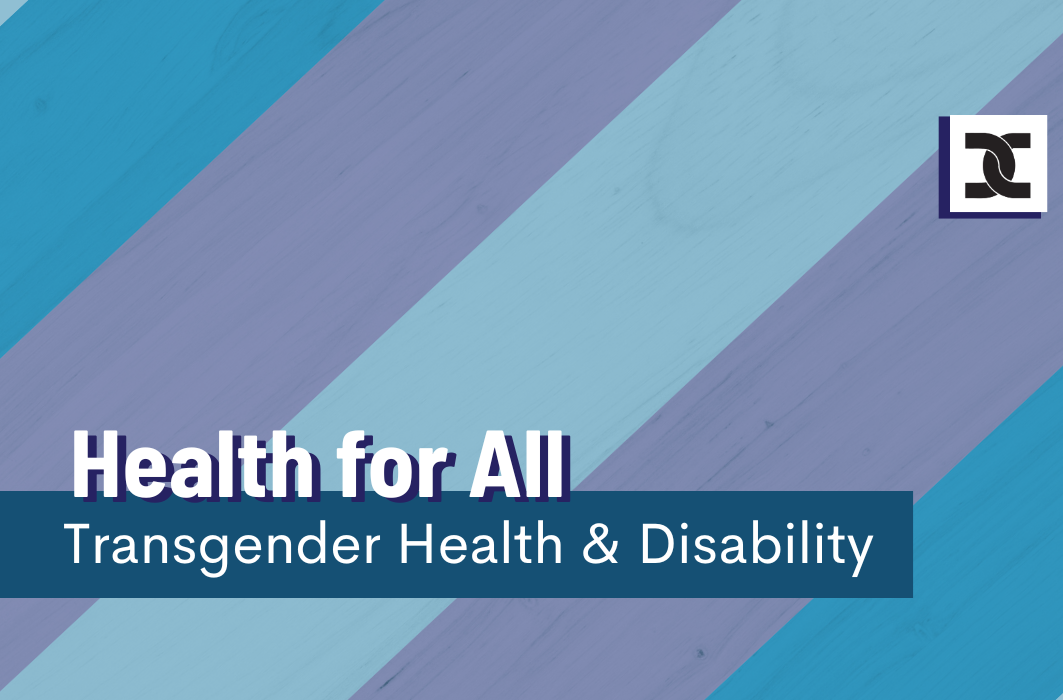Rebuilding Trust toward Gender-Affirming Care
This piece is the second installment in our blog series discussing transgender health care from the disability lens.
Transgender healthcare has changed since its early days with Hirschfield and his colleagues. So has our understanding of what it means to be transgender. About 1 in 250 American adults identifies as transgender. Psychiatrists once categorized it as a mental illness. Now, we know it is not, and that this contributed to stigma. In fact, in 2013, the DSM-5 changed “gender identity disorder” to “gender dysphoria.” The change aimed to improve care and acceptance for trans people. But, what is gender dysphoria, and why does it matter?
According to the American Psychiatric Association, gender dysphoria “refers to psychological distress that results from an incongruence between one’s sex assigned at birth and one’s gender identity.” There is a growing body of medical research in this field. It shows that a rare mix of hormones and connections within the nervous system causes gender dysphoria. This creates a mismatch between one’s sex and gender identity. For example, a person may feel like a man trapped in a woman’s body. In 2015, the US Department of Justice studied this evidence. It concluded, “the current research increasingly indicates that gender dysphoria has physiological or biological roots.” They found that gender dysphoria can be a protected disability.
For many, this mismatch between one’s gender identity and sex at birth can harm their mental health, ability to access social supports, and work. This is when the ADA considers gender dysphoria a protected disability. It offers protection and accommodation. This helps create a more inclusive environment. It lets people get needed medical care and support without fear of discrimination. This view of gender dysphoria shows a need to affirm diverse gender identities in disability rights.
The ADA protects people with gender dysphoria. Those with it can get accommodations to help them thrive in the workplace and school. These accommodations may include flexible scheduling for care that affirms one’s gender. Another accommodation would be the use of preferred names and pronouns. They can also ask for gender-neutral restrooms and to dress according to their gender identity. Hygiene items and hair removal should be provided. Equal programs and services should be available. Housing transfers should be provided if requested. Also, employers and schools should offer mental health resources, per the ADA. They should include counseling that meets the needs of transgender people. They can make the environment more welcoming and supportive to affirm and respect the identities of those with gender dysphoria.
Gender dysphoria can be debilitating. Transition can relieve it. Evidence-based medicine supports this in the global medical communities. Some states and federal courts now protect care for trans people. This includes a 2014 ruling that says Medicare must cover gender-affirming surgery (also known as transition surgery). One barrier to accessing treatment is that those living in some areas must receive a diagnosis of “gender dysphoria” to get that care. This can lead to long tests, unwanted procedures, and long waits. This can cause more dysphoria than necessary. The question is: who decides if someone has enough dysphoria to get this treatment? This creates a rift between the medical care system and the community. The community needs that care to live more fulfilling, true lives.
But, many transgender people do not trust or seek medical care. There are many causes of the rift between the transgender and medical communities. Transgender people see key themes in their poor experiences with healthcare providers. These can cause fear and distrust. People then avoid care or are denied treatment after disclosing their transgender or LGBTQ+ status. One transgender patient said, “A nurse said I would be doing the world a favor by dying.” This was after they sought gender-affirming and mental health care.
Transgender people are a marginalized group. Research shows that transgender people have poorer health outcomes than their cisgender peers. Discrimination and stigma in social, work, and medical settings contribute to this. They also face high poverty and suffer from violence and abuse by the justice system. These factors are major social drivers of health that harm trans people. Stigma and discrimination prevent them from getting access to health insurance and even health care. These factors raise the risk of HIV, self-harm, and suicide in trans people.
One way to rebuild trust between the healthcare system and the transgender community is participatory research. There are, for valid reasons, large gaps in research on the health issues that affect transgender people. Few studies exist on the transgender community. However, it is our hope that the future of transgender healthcare looks more like the community it serves. Coming up next in our series is our vision and hope for the future of transgender healthcare.
Author: Devon Anderson
